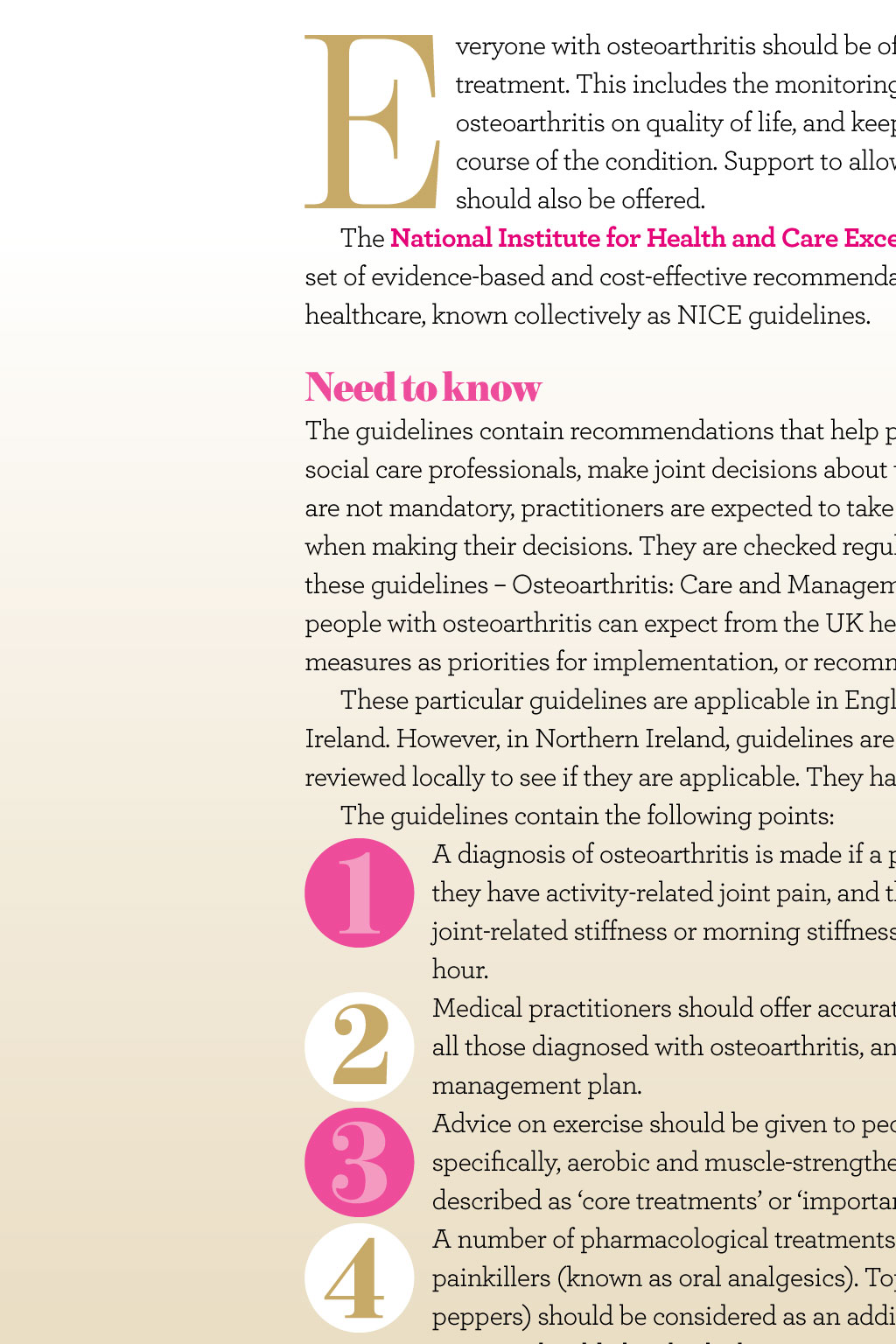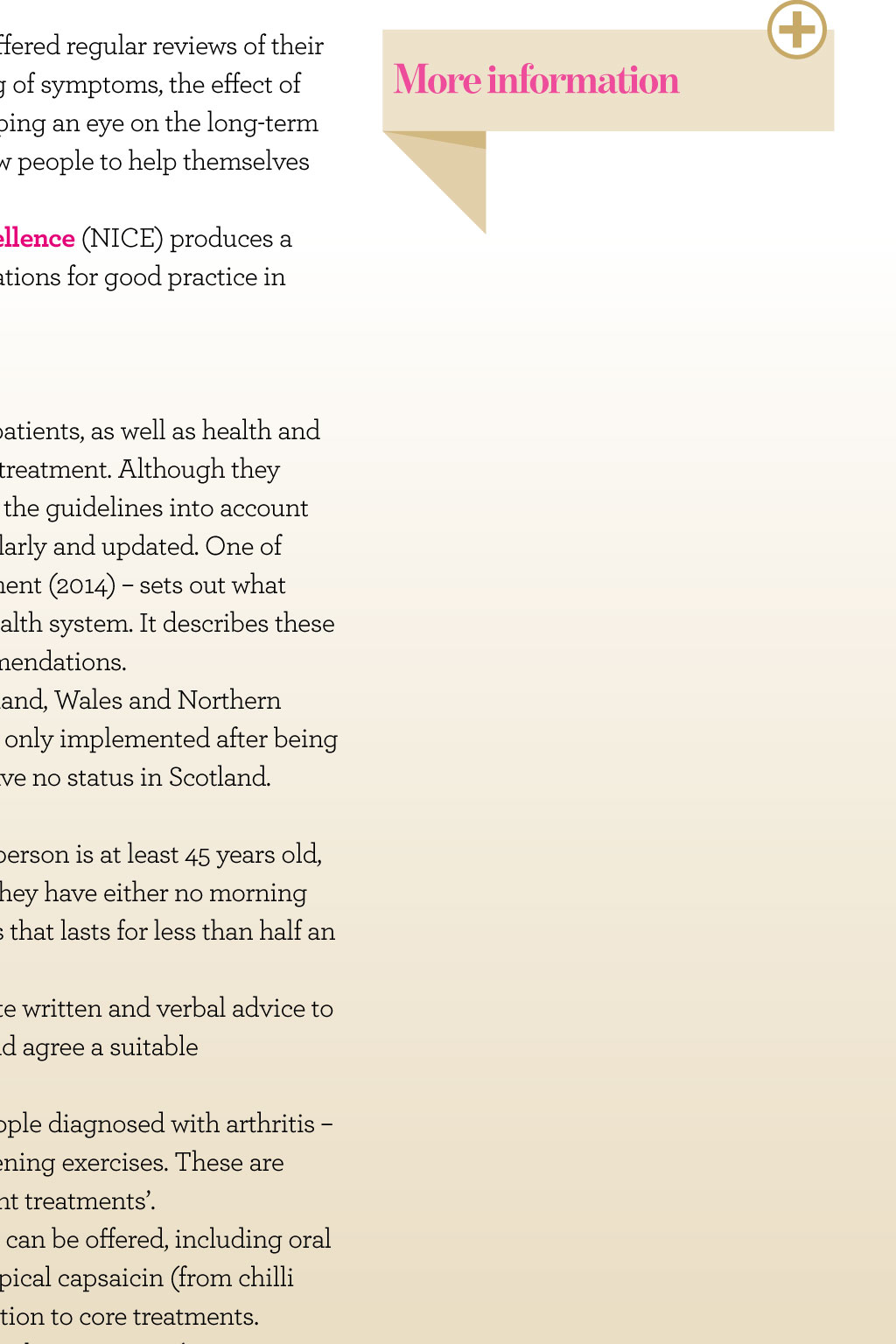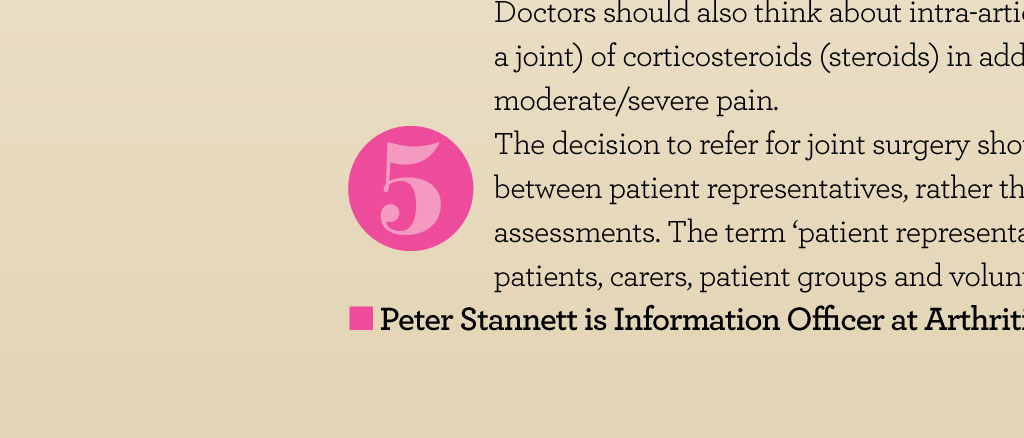












Health Your treatment: what to expect If youve just been diagnosed with osteoarthritis, you may be unsure what to expect. Here, we outline the guidelines and recommendations that will help ensure you get the best out of your treatment WORDS: peter stannett E veryone with osteoarthritis should be offered regular reviews of their treatment. This includes the monitoring of symptoms, the effect of osteoarthritis on quality of life, and keeping an eye on the long-term course of the condition. Support to allow people to help themselves should also be offered. The National Institute for Health and Care Excellence (NICE) produces a set of evidence-based and cost-effective recommendations for good practice in healthcare, known collectively as NICE guidelines. Need to know The guidelines contain recommendations that help patients, as well as health and social care professionals, make joint decisions about treatment. Although they are not mandatory, practitioners are expected to take the guidelines into account when making their decisions. They are checked regularly and updated. One of these guidelines Osteoarthritis: Care and Management (2014) sets out what people with osteoarthritis can expect from the UK health system. It describes these measures as priorities for implementation, or recommendations. These particular guidelines are applicable in England, Wales and Northern Ireland. However, in Northern Ireland, guidelines are only implemented after being reviewed locally to see if they are applicable. They have no status in Scotland. The guidelines contain the following points: A diagnosis of osteoarthritis is made if a person is at least 45 years old, they have activity-related joint pain, and they have either no morning joint-related stiffness or morning stiffness that lasts for less than half an hour. Medical practitioners should offer accurate written and verbal advice to all those diagnosed with osteoarthritis, and agree a suitable management plan. Advice on exercise should be given to people diagnosed with arthritis specifically, aerobic and muscle-strengthening exercises. These are described as core treatments or important treatments. A number of pharmacological treatments can be offered, including oral painkillers (known as oral analgesics). Topical capsaicin (from chilli peppers) should be considered as an addition to core treatments. Doctors should also think about intra-articular injections (injections into a joint) of corticosteroids (steroids) in addition to treatment for moderate/severe pain. The decision to refer for joint surgery should be based on discussions between patient representatives, rather than scoring on tests/ assessments. The term patient representatives refers collectively to patients, carers, patient groups and voluntary sector organisations. n Peter Stannett is Information Officer at Arthritis Research UK More information If you would like more information about osteoarthritis, you can order a copy of Arthritis Cares living with osteoarthritis booklet by phoning the Arthritis Care Helpline on 0808 800 4050.